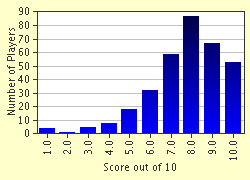Quiz Answer Key and Fun Facts
1. A blue plaque at 31 King Street, Covent Garden, marks the house where this English composer lived from 1760 to 1775. He is best known as the composer of "Rule Britannia", written for the patriotic masque "King Alfred". What is his name?
2. The subject of this plaque lived at 6 Grenville Place, South Kensington, from 1875-1890. The plaque describes him as a "pioneer in social research", and his greatest work is his 17-volume study of poverty in London, entitled "Life and Labour of the People of London". Who is he?
3. A plaque at 17 St Anne's Villas, Kensington, W11, marks the birthplace of this performer in 1861. He went on to become one of England's most popular music-hall artists, and is best known for his songs "My Old Dutch" and "Knocked Them in the Old Kent Road". What is his name?
4. This famous novelist lived at several addresses in London, many of which are marked by blue plaques. One of these is 48 Doughty Street, Holborn, where he lived from 1837-1841, and where he wrote two of his most famous works, "Oliver Twist" and "Nicholas Nickleby". What is his name?
5. The blue plaque at 121 Regent's Park Road, NW1, describes this individual as a "political philosopher". He was born in Germany, but moved in England in 1842, when he was in his early 20s. He was a friend and associate of Karl Marx, and together they wrote the "Communist Manifesto". Can you name him?
6. A blue plaque at 20a, Danvers Street, Chelsea, commemorates the fact that it was the residence of a particular Scottish doctor from 1929 until his death in 1955. In fact, the discovery for which he is most famous - the effect of penicillin on bacteria - took place in 1928, the year before he moved here. What is his name?
7. This man, born in 1856, lived in London for only a short while, from 1938 until his death in 1939. What is the name of this distinguished professor, who is described by the blue plaque on his house at 20 Maresfield Gardens, Hampstead, NW3 as the "founder of psychoanalysis"?
8. The blue plaque at 11 Carlton House Terrace, SW1, marks the one-time residence of one of Victorian England's greatest statesmen. He was Prime Minister on four separate occasions: 1868-1874, 1880-1885, 1886 and 1892-1894. What was his name?
9. A blue plaque at 7 Bendinck Street, Mayfair, marks this as the residence of a famous historian between 1773 and 1783. Here he wrote part of his greatest work, "The Decline and Fall of the Roman Empire". Who was he?
10. This artist, born in 1827, was a founder-member of the Pre-Raphaelite movement. He lived at 18, Melbury Road, Fulham, for 30 years until his death in 1910. His best-known works include "The Light of the World" and "The Lady of Shalott". Can you name him?
Source: Author
stedman
This quiz was reviewed by FunTrivia editor
thejazzkickazz before going online.
Any errors found in FunTrivia content are routinely corrected through our feedback system.

